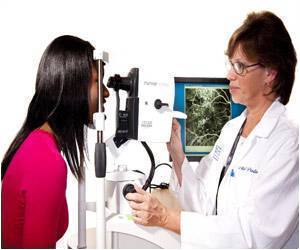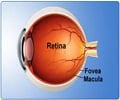HAOSLO, a new handheld device may help examine the photoreceptors of young kids who are too mischievous to comply with AOSLO ophthalmoscope procedure, finds a new study.
- New Handheld probe may help examine photoreceptors in the eyes of small kids
- Adaptive optics scanning laser ophthalmoscope (AOSLO) is currently performed to visualize the photoreceptors in adults as well as kids.
- But AOSLO is not very useful in small kids who do not comply with specific orders.
Previous studies have shown that neurodegenerative diseases, including Alzheimer's and Parkinson's, as well as traumatic brain injuries, such as concussions, can alter the neuronal structures in the retina.
To study these neuronal structures, researchers commonly use an adaptive optics scanning laser ophthalmoscope (AOSLO), a non-invasive tool that provides a significantly higher image resolution than an MRI.
Although traditional AOSLO allows researchers to visualize individual photoreceptor cells, such systems are as large as a billiard table, costly and extremely complex. Its use has been limited to patients who are able to sit upright fix their gaze for several minutes, which means it is not as useful for young children or for adults with cognitive or mobility issues.
The new system, called HAOSLO for handheld AOSLO, measures just 4 inches by 2 inches by 5.5 inches and weighs less than half a pound.
"Other researchers have shown that the wavefront sensor can be replaced by an algorithm, but previous algorithms haven't been fast or robust enough to be used in a handheld device," said Theodore DuBose, a Ph.D. student in the department of biomedical engineering at Duke and the first author of the paper. "The algorithm we developed is much faster than previous techniques and just as accurate."
"Our new tool is fast and lightweight so physicians can take it directly to their patients, and the probe allows us to collect images quickly, even if there is movement," said Sina Farsiu, an associate professor in the departments of biomedical engineering and ophthalmology. "These capabilities allow us to open up the pool of patients who could benefit from this technology."
The tool's new design makes it especially useful for imaging the eyes of young children. For example, premature newborns have a greater risk of developing eye diseases, like retinopathy, which can lead to blindness if not diagnosed quickly. Researchers can also use the tool to track early brain development in children by imaging their retina, which develops along with the central nervous system.
The team is optimistic about the tool's use both inside and outside of the hospital. Because the HAOSLO can be taken into an operating room, physicians will be able to see the photoreceptors at the highest resolution possible during surgery, even when a patient is under anesthesia and in a reclined position. It could also help doctors rapidly assess possible brain trauma in athletes, such as football players coming off the field with head injuries.
Before the researchers prepare for large-scale clinical trials, they plan to incorporate additional imaging modes for detecting other diseases.
They also have made the mechanical designs, computational algorithms, and control software freely available online so that other scientists can adapt the new system for their scientific applications.
Source-Eurekalert










